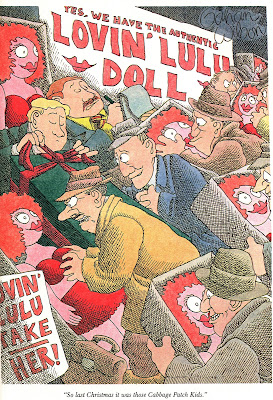'Blackmark' by Gil Kane
Bantam Books, January 1971
Bantam Books, January 1971
According to the Afterward by Gary Groth in the expanded trade paperback edition of 'Blackmark' published by Fantagraphics in 2002, back in the early 70s, Gil Kane had a tentative offer with Bantam Books to provide a projected eight volumes in the series. Kane had finished the second volume by the time the first appeared on store shelves early in 1971.
However, distributors and retailers had no idea how to market the nation's very first graphic novel; was it to be placed with the science fiction paperbacks ? Or with such paperback compilations as 'Mad' magazine and 'Peanuts' ? The failure of the first volume to find an audience led Bantam to drop the arrangement with Kane, and the second volume, titled 'The Mind Demons', never saw print until Marvel published it in Marvel Preview magazine early in 1979.
I could only make scans of the margins of my copy of the Bantam book for fear of cracking the spine, but I think these scans give an idea of the contents of 'Blackmark'.
One thing that becomes immediately clear is that Kane (with assistance from Harvey Kurtzman, Howard Chaykin, and Neal Adams) was meticulous in his applications of up to three different Zip-A-Tone patterns to every panel in the book.
In the early 70s this was not a trivial thing to do; there was no Photoshop back in those days, and each sheet of Zip-A-Tone had to be cut out and trimmed to overlay the drawing on which it was applied. That Kane managed to do this for 'Blackmark', while at the same time meeting his obligations for illustrating comic books for Marvel and DC, is evidence of an impressive work ethic.
As for the plot of 'Blackmark', which apparently benefited from input from Roy Thomas, it's a competent tale of an orphan who is marked for great things and overcomes all manner of adversity in his path to ascendency.
Summing up, if you're nostalgic for Old School comics and art, then picking up a copy of 'Blackmark' (if you can find it for a reasonable price) is worthwhile. It's also worthwhile to look for an affordable copy of the 2002 Fantagraphics trade paperback, which has long been out of print and has steeply rising prices for copies in good condition.













































































